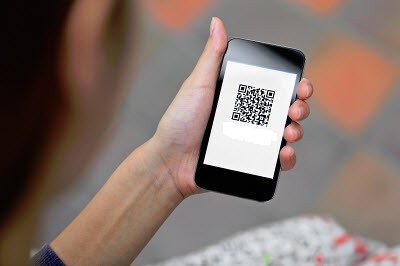New billboards and signs featuring quick response codes will be placed in locations worldwide.
Clear Channel, a company that currently has nearly 700,000 signs and billboards positioned in different spots around the globe is planning to add 75,000 QR codes to advertisements in areas that feature “heavy footfall and long dwell-time”.
This means that places such as bus stops, shopping malls, and airports will now see quick response codes.
The QR codes on the billboards will also have added SMS capabilities that make it possible to text people who are close by or to use near field communication (NFC) technology for the contactless transmission of information to devices that are located in close proximity. This converts the posters into a form of mobile marketing with considerable potential.
The QR codes and other technology will help to better connect with consumers who are on the move.
According to Clear Channel, the initiative, which they have called Connect, “presents the opportunity to target consumers on-the-go, when they are receptive to messages and can be delighted by timely, relevant and tailored invitations to engage.” That statement was made by the company’s chief operating officer, Suzanne Grimes.
These types of distractions, such as being able to scan a QRcode, are typically welcome in areas such as airports where people are looking for something simple to do in order to kill time. It isn’t something that they would likely do if they were in a hurry and were just walking from one place to another, but when they are forced to wait around, they will be far more willing to amuse themselves with activities such as barcode scans.
That said, to become effective, the ad needs to find some way to become noticed in the first place. Before consumers are able to scan QR codes, then need to actually realize that they’re there. It is in this area that Clear Channel has managed to stand out, as it has employed other technologies to draw more attention to itself and to make sure that its posters aren’t seen as simply passive atmosphere. This way, they become interactive features.
Companies are now expected to spend nearly double, this year, what they did last year.
According to the results of a recent study, global mobile ad spending is rising extremely quickly, as it had reached $17.96 billion in 2013, having more than doubled since the year before, and now it is expected to nearly double once again this year.
The growth in 2014 should reach about 75 percent, to bring itself to a worldwide total of 431.5 billion.
The mobile ad spend total for this year represents about a quarter of all of the spending that has occurred on digital advertising. The two companies that will be benefiting the most as a result of this growing spending are Google Inc. and Facebook Inc. Last year, those two companies took in over two thirds of the amount of money that was spent on mobile marketing ads.
The mobile ad budget and spending data for the report was assembled by Millennial Media Inc.
That company offers data analysis for advertisers to help to provide valuable insight and shed some light on industry trends. The report helps to better understand the goals of advertisers based on the spending for the channel that occurred last year, compared it to the year before, and made predictions for this year. The data regarding ad spending had been published last week by eMarketer.
Millennial Media reported that the leading five vertical markets in terms of spending over the mobile channel for advertising, last year were: entertainment, retail, telecommunications, finance, and computer goods, in that order. When compared to the year before, entertainment and retail switched places, and automotive spending’s position was taken by consumer goods.
The consumer goods mobile spending has grown by 134 percent in 2014 alone. However, the largest increase that was seen year over year was in sports advertising. That sector increased the amount that it was pouring into ads by almost 500 percent. One of the trends that increased by the largest amount in terms of popularity and spending was rich media and video ads, which managed to increase 350 percent in the auto advertising sector when compared to banner ads.



